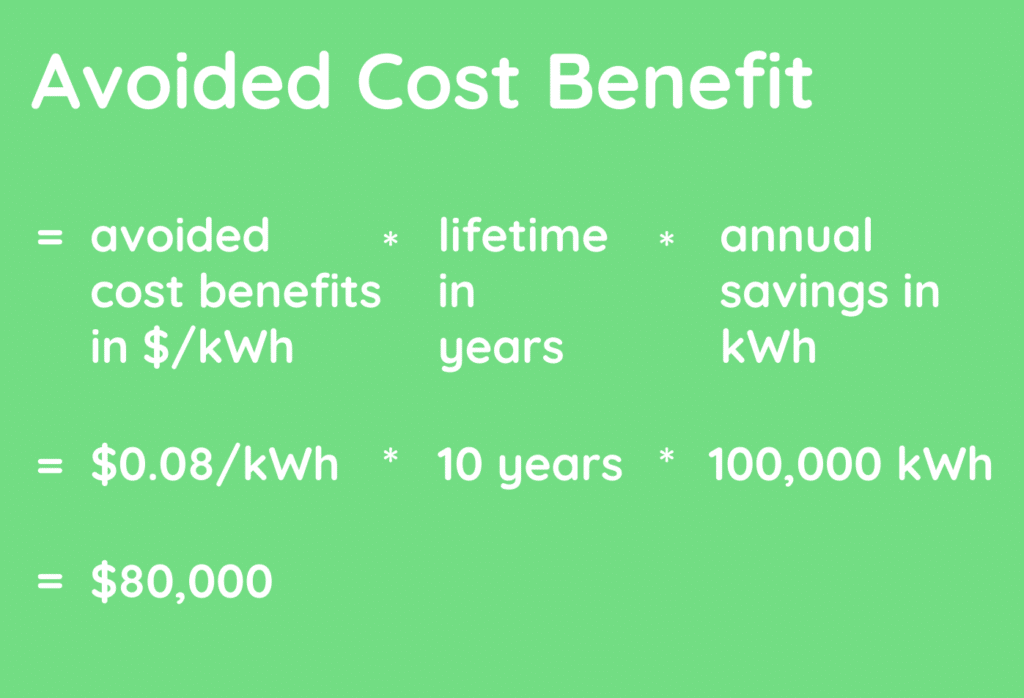Special thanks to Danielle Wright from NASRC for her contributions to this post.
There’s a policy disconnect between accounting for energy efficiency and greenhouse (GHG) reduction through utility incentive programs that requires resolution for us to achieve sustainability goals. The supermarket industry has long recognized that refrigerants are powerful greenhouse gases and that reducing their emissions is a key component of climate change mitigation. We’ve been addressing CO2 emission reduction through energy efficiency (EE) for decades, one of the big policy drivers for EE is lowering emissions from fossil-fueled power plants. Until recently, those two efforts were completely separate and uncoordinated. But policy moves in California (CA) are edging towards a more unified policy where these two desired outcomes – reduction of refrigerant greenhouse gases, and reduction of power plant CO2 – are treated using shared metrics. This post explains current policies, and what we might expect in the future.
Hydrofluorocarbon reduction policies and energy efficiency
In California, SB-1013 (Lara 2018) required the Public Utilities Commission to consider developing a strategy for including low-global-warming-potential refrigerants in equipment funded by the energy efficiency programs (In CA the PUC provides the regulatory oversight of energy efficiency). We’re now starting to see the fruits of that approach and perhaps other states will adopt a similar approach. Here are the basics of:
- how CA energy policy places societal value on these environmental consequences, and
- how it may change the incentive landscape for refrigerant retrofits and energy efficiency.
How do policies value energy efficiency?
Energy efficiency is valued at the program level based on “avoided costs”. In California, the benefits that are used to quantify energy savings reflect the hourly values of a number of factors including the cap-and-trade value of avoided emissions, avoided energy generation costs, avoided transmission costs, the value of avoided greenhouse gas emissions, and others. But by far the largest contributor is the avoided cost of generation capacity, or in other words, the avoided costs of building power plants to meet growing peak loads. Each of these factors is given an hourly value, and then the sum of those costs over the lifetime of the energy efficiency measure determines the policy value of the energy efficiency resource.
The value of a specific energy efficiency measure depends on when the savings occur, with a high premium paid for measures that save energy when avoided costs are highest. In California, currently those peak prices are for weekday evenings, especially during peak summer months in August and September when demand is highest and the grid supply is constrained. At those times avoided costs surge to nearly $10 per kWh or so (for a few hours of the year), compared to an annual average of around $0.08 /kWh. But remember, those costs reflect only one year of energy savings, and the total value of the energy efficiency resource is that value multiplied by the number of years the energy efficiency measure is expected to deliver savings (relative to the “do nothing” base case). So, if the measure was expected to provide savings for 5 years, you’d value the average energy efficiency measure at 5 x $0.08 /kWh, or roughly $0.40 /kWh, or about double the retail commodity price of electricity.
Calculating potential energy saving benefits in supermarkets
To put that in perspective, consider your average supermarket. The typical US grocery store is about 40,000 square feet and has a refrigeration system of roughly 100 tons (cooling tons that is). Let’s say your energy efficiency project saves roughly 100,000 kWh per year – or about $20,000 per year in operating costs to the customer (at CA rates). If the project saves energy for say 10 years, the avoided cost benefit would be as follows:

Let’s keep that number in mind for a bit further down the post.
How do policies value GHG reductions of refrigerant changes?
Many refrigerants are powerful greenhouse gases, with climate impacts thousands of times more powerful than carbon dioxide. Hydrofluorocarbons (HFCs) are also considered short-lived climate pollutants (SLCPs) which means they are disproportionately impactful to climate change in the near term. California set a specific strategy to reduce SLCPs as part of their larger GHG reduction goal. In CARB’s words “Through scientific analysis and available data, CARB has determined that the retail food sector is one of the largest sources of HFC emissions and has one of the most cost-effective emission reduction potentials.”
GWP of Refrigerants
Typically GHG impacts are expressed in terms of Global Warming Potential (GWP), or the amount of carbon dioxide would have an equivalent impact. Below are some common refrigerants and their GWP for comparison (btw R-11 and R-12 were phased out due to their ozone depleting potential, which is a separate issue). You can see why refrigerants have such a large potential as greenhouse gases, especially considering that a typical supermarket loses 20-25% of its refrigerant charge every year.

* 100-year GWP Values from IPCC Fourth Assessment Report (AR4) (2007)
In short, refrigerants have an impact that is thousands of times larger than CO2 emissions.
How does the value of energy efficiency and GHG mitigation compare?
Recently the CPUC has issued an avoided cost calculator to put the outsized impact of refrigerants in terms of dollars – the same way that it values energy efficiency – in terms of avoided costs. And because the refrigerants have a huge GHG impact, and leak rates continue to be fairly large in traditional commercial refrigeration systems, the societal impact is huge too.
Societal benefit of HFC retirement
The societal benefit for HFC retirement is valued in terms of the avoided greenhouse gas emissions of the refrigerant being removed, multiplied by the average leak rate of that refrigerant, times the number of years of avoided emissions. Also, the CPUC puts an extra value on the end-of-life leakage – that refrigerant that may be lost when the system is decommissioned.
Dollar value of avoided GHG in supermarkets
Taking again our typical grocery store, if we have on site say 1,000 lbs of R-404a (mid-sized, average refrigerant for CA), with an average leak rate in the range of 23 or 24%, for a system with a remaining life of 10 years (to be comparable with our efficiency example), you have a net societal benefit of about $450,000 for retiring that system. That’s a big number!

What our policy framework is telling us is that for this same grocery store, the environmental benefit of changing the refrigerant to a low-GWP option, is about 560% better than saving 100,000 kWh per year. Importantly though, the energy efficiency measure would also save the customer $20,000 per year in operating costs, whereas the HFC retirement project would also be 1) substantially more expensive and 2) likely result in no significant operational cost savings.
GHG reduction policies and incentives to date
So far, the CPUC has officially recognized the societal benefits of GHG reductions through HFC retirement, but it’s not yet clear that utilities have a clear incentive to help and to truly integrate energy efficiency and HFC phase-out. IOUs have budgets that are contingent on meeting energy savings targets, but there is less of a clear reward for GHG reduction. For example, any EE budgets that were spent on HFC phase out would count towards societal benefits, but not the IOUs’ savings goals. In efficiency program parlance that means it would help the program pass the Total Resource Cost test (or TRC) but not count towards performance goals.
Fully subscribed HFC phase-out incentive program
The California Air Resources Board administered a small HFC phase-out incentive program this year with funding from the Greenhouse Gas Reduction Fund to pay grocers directly for retiring high-GWP refrigerants. However, that program, the F-gas Reduction Incentive Program (FRIP), offered only $1M statewide, and was fully subscribed essentially overnight. Unless the state adds funding to the program, or utilities use energy efficiency funding to help, there’s little funding available to help with this initiative that, while it has high societal value according to policy makers, it comes at high costs to customers.
Resolving the dichotomy between efficiency and GHG reduction utility spending
Personally, it seems that our incentives, policies, and budgets are temporarily out of sync. When I first heard about the CPUC’s method for valuing HFC phase outs – it seemed to set up an equivalence between energy efficiency and GHG reduction. If you see energy efficiency in terms of dollars of societal benefits, and GHG reduction in terms of the same calculation of dollars of societal benefits, couldn’t you set up an equivalency between energy efficiency and GHG reduction from phase outs? If so, then could energy efficiency programs get credit towards their goals for energy efficiency through HFC reductions if that’s the most cost-effective way to get the GHG reduction?
Barrier to utility incentives for GHG reduction
Currently the dollars are in the EE “bucket” and have to result in EE savings, and the more cost-effective societal need is in the GHG “bucket” which lacks funds. Utilities are free to spend their budgets on GHG reduction, and that could improve some of the metrics used to judge their performance (such as TRC), but it wouldn’t get them closer to their energy efficiency targets, and they’d have less budget left to get there.
Can equivalent accounting help?
What if those GHG reduction strategies counted just like kilowatt hours? Using our example above if 100,000 kWh results in $80,000 in societal benefit, and 1000 lbs of R-404a retired is worth $450,000 of societal benefits, shouldn’t a pound of R-404a count towards an IOUs’ goals the same as 1,000 kWh of savings?
Let’s eliminate buckets and account for the greater good
I hope that we can find ways to eliminate the differences between our policy “buckets” so that we can do the right thing for our clients, our ratepayers, and our kids. In the meantime, we’ll keep looking for ways to help our clients save money and the planet by increasing commercial building sustainability. If you have questions about the impacts of HFC phase-out on your refrigeration system contact us anytime.


